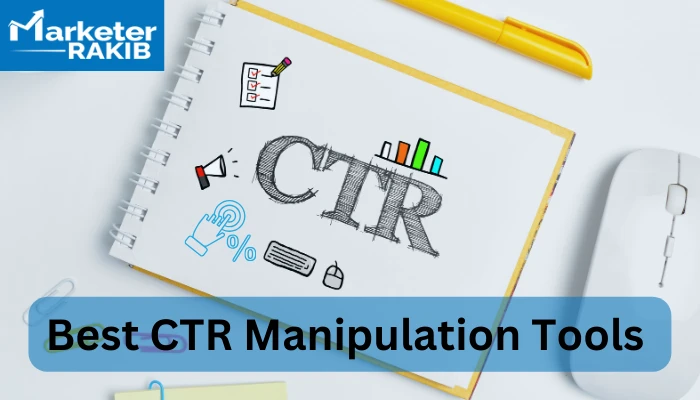GMB CTR Manipulation Explained: What You Need to Know
Grasping CTR Control: Tips for Boosted Click-Through Efficiency
Enhancing click-through prices (CTR) is a fundamental aspect of digital advertising methods, yet understanding the art of CTR adjustment calls for a nuanced approach. The realm of CTR manipulation holds untapped potential for those willing to explore its intricacies and unlock its full impact on digital success.

Understanding CTR and Its Effect
Understanding click-through rate (CTR) and its influence is essential for any individual associated with electronic advertising and marketing. CTR is an essential efficiency indication that measures the efficiency of an online advertisement or material by determining the percent of customers who clicked on a certain web link out of the overall number of perceptions it obtained. A high CTR shows that the ad or content is resonating well with the audience, while a reduced CTR recommends the contrary.
CTR is essential since it directly affects the success of electronic advertising and marketing projects. A high CTR not just drives more traffic to a site however likewise enhances its internet search engine position. Online search engine like Google take into consideration CTR as a solid signal of an advertisement's relevance and quality, which can lead to higher ad positions and lower costs per click.
Additionally, understanding CTR enables online marketers to optimize their campaigns by examining different advertisement aspects, such as headings, pictures, and calls-to-action, to enhance efficiency. By examining CTR data, marketing professionals can make informed choices to boost the performance of their digital advertising and marketing efforts.
Crafting Engaging Meta Descriptions
Crafting engaging meta summaries plays an essential role in driving user engagement and click-through prices on online search engine result web pages. Meta summaries are the quick fragments presented below the web page title in search engine result, offering a concise recap of the page's material. To develop effective meta descriptions, it is crucial to keep them within the advised length of around 150-160 characters to guarantee they are totally presented on internet search engine results web pages.
When crafting meta summaries, it is necessary to consist of targeted keyword phrases appropriate to the web content of the webpage. These keyword phrases ought to match the customer's search intent, boosting the probability of customers clicking through to the website. In addition, integrating a call-to-action within the meta summary can encourage customers to take the desired action, whether it's clicking via to read a post, purchase, or enroll in a solution.

Leveraging Abundant Snippets and Schema Markup
To enhance the presence and significance of internet search engine results, web site proprietors can utilize abundant snippets and schema markup. Rich bits are extra pieces of details displayed in search results that supply individuals with a sneak peek of the content on a page. By consisting of structured data in the kind of schema markup, web site proprietors can help search engines better recognize the context of their web content, resulting in more insightful and aesthetically attractive search outcomes.
Implementing schema markup allows search engines to show rich fragments that can consist of details like rankings, evaluations, rates, and item schedule directly in the search results. This added details can significantly raise the click-through rate by supplying users with a far better understanding of what the webpage supplies before they also visit it. Additionally, abundant fragments can make search results page stand out from rivals, attracting even more attention and possibly leading to greater click-through rates.
Incorporating abundant snippets and schema markup right into a site's SEO technique can improve search results page exposure, rise user involvement, and inevitably drive even more website traffic to the website. - CTR Manipulation Service
A/B Examining Techniques for Optimum CTR
Enhancing the click-through rate (CTR) of a website is essential for maximizing its online performance and accomplishing advertising goals. A/B testing is an effective method that permits marketers to compare two versions of a web page or component to determine which one does much better in regards to CTR. By carrying out A/B tests, online marketers can determine blog what reverberates finest with their target market and make data-driven choices to optimize their CTR.
When carrying out A/B testing for optimum CTR, it is important to concentrate on one variable at once to precisely gauge its impact. Aspects such as headlines, call-to-action buttons, pictures, and even color design can substantially affect CTR. By examining these components independently, online marketers can pinpoint what drives the many involvement from their target market.
Furthermore, it is essential to guarantee that the sample dimension for A/B tests is statistically substantial to attract reliable final thoughts. Consistently keeping an eye on and examining the outcomes of A/B tests will provide beneficial understandings into user behavior and web link choices, allowing constant optimization for boosted CTR performance.
Surveillance and Analyzing CTR Performance
Efficient monitoring and evaluation of click-through rate (CTR) efficiency are basic components of any click to investigate successful electronic advertising approach (CTR Manipulation). By closely keeping an eye on CTR information, marketers can gain valuable insights into the efficiency of their projects, enabling informed decision-making and optimization efforts. Frequently tracking CTR metrics across numerous channels and campaigns offers a detailed sight of audience engagement and campaign efficiency
Evaluating CTR efficiency involves assessing elements such as ad copy, visuals, targeting approaches, and landing page importance to determine what reverberates most with the target audience. By leveraging devices like Google Analytics, marketing experts can dig deeper right into CTR patterns, segmenting information to understand performance variations across different demographics, devices, and areas.
Continual surveillance and analysis allow marketers to recognize underperforming areas and carry out targeted renovations to improve CTR (CTR Manipulation Service). Furthermore, contrasting CTR metrics versus sector standards can give valuable context and assistance set realistic efficiency goals. On the whole, a data-driven method to monitoring and analyzing CTR efficiency is critical for optimizing electronic advertising efforts and accomplishing greater click-through effectiveness
Final Thought
To conclude, mastering CTR adjustment needs a tactical method that focuses on crafting engaging meta summaries, leveraging rich snippets, carrying out A/B testing methods, and continually checking and analyzing CTR efficiency. By straightening with individual intent, incorporating pertinent key words, and using data-driven methods, businesses can increase their click-through effectiveness and improve general campaign efficiency. It is necessary to constantly fine-tune and optimize approaches to remain competitive in the digital landscape.